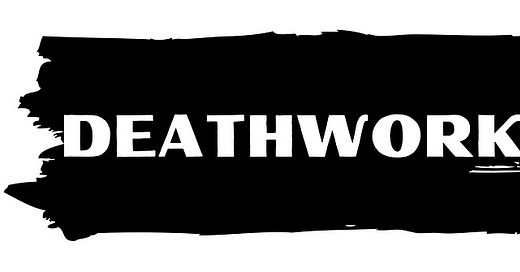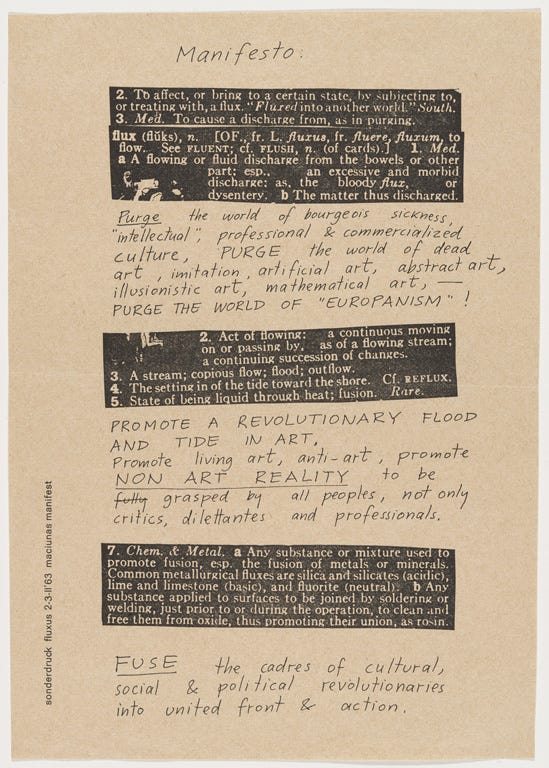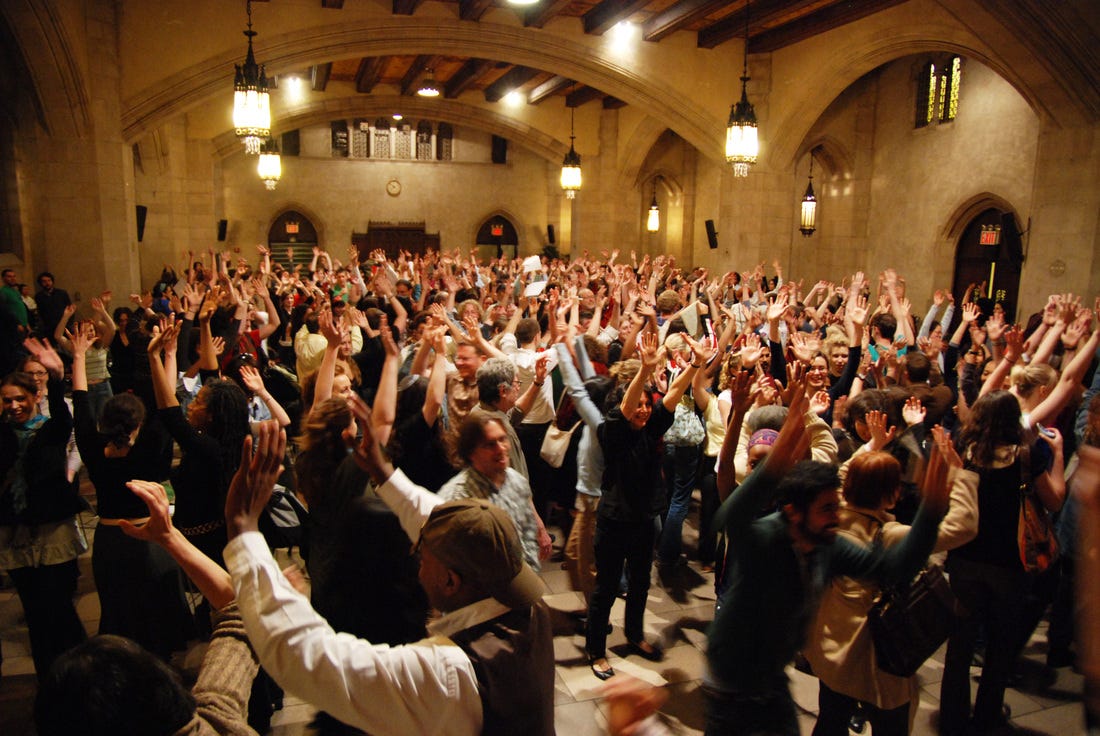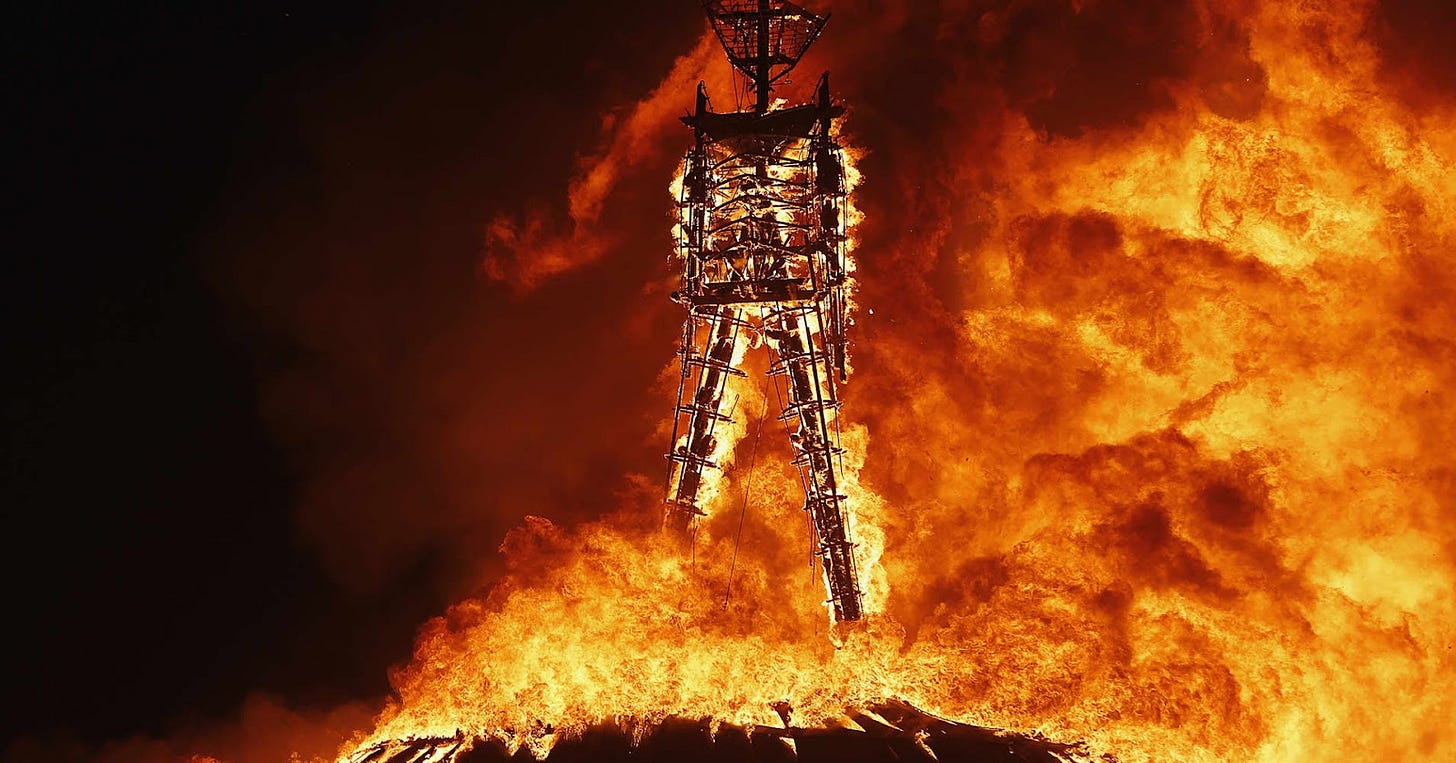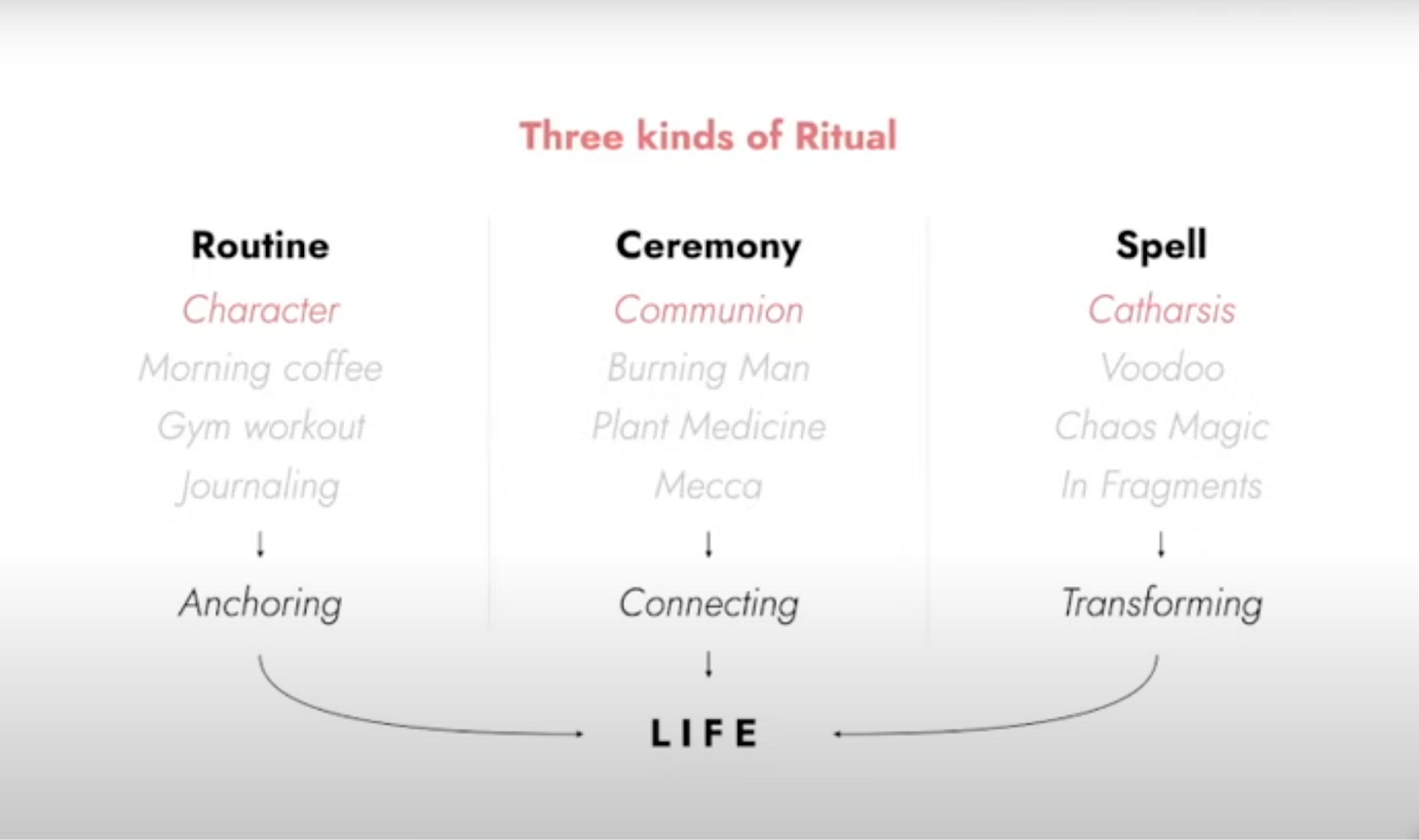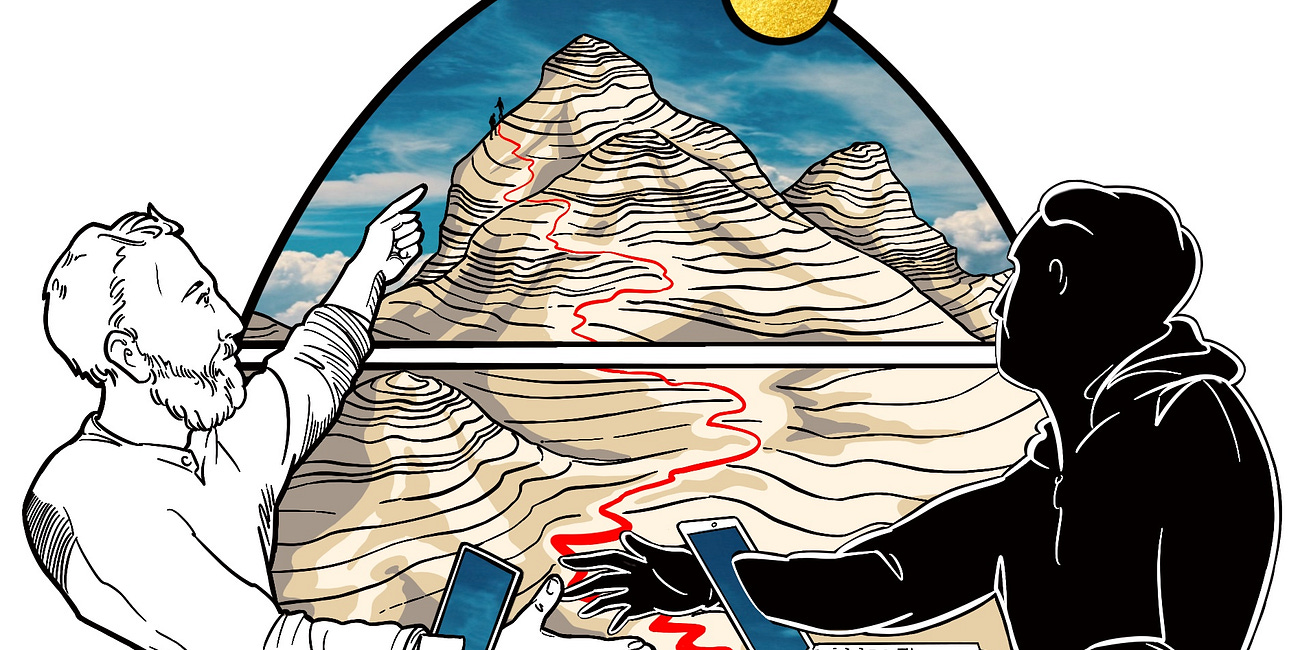“Where is the vital edge of culture?”
A friend asked me this recently, and I replied, "There isn't one." I said this because there seems to be no culture at all.
Instead we have Marvel movies, Netflix shows, and social media, where everyone is hustling for attention, prostituting their digital avatars for status. The spectacle1 is acquiring more ocular real estate, with the culture war emotionally hijacking us and psyops gaslighting us. TikTok, Twitter, and Instagram have something in common: keep users on their platforms by helping them capture the eyeballs of others. This attentional capturing has something else in common: deathworks.
In cultural critic Philip Reiff's My Life Among the Deathworks: Illustrations of the Aesthetics of Authority, Reiff sees creations that erode a society's foundational sacred values as deathworks. These works contribute to the "death" or dissolution of a culture's cohesive values. Rieff exemplifies his concept using Andres Serrano's controversial 1987 image, "Piss Christ," featuring a photograph of Christ on the cross, immersed in the artist's urine. Rieff interprets this as transforming something sacramental into something excremental.
What is sacred brings people together and what is profane separates them. Leaning on sociologist Emile Durkheim's notion of the sacred, it serves as a unifying force among a community, in contrast to the profane that immerses us in mundane affairs. Sacred elements, from icons or rituals, aim to foster communion with others, bringing them together with a spirit that transcends any one person. Conversely, deathworks aggressively work to undermine any communal unity, dispiriting people and keeping them atomized and alienated.
“By deathwork I mean an all-out assault upon something vital to the established culture.” - Philip Reiff
Contemporary social media phenomena, ranging from TikToks to tweets, primarily focus on capturing attention through the pursuit of virality, are predominantly deathworks. The quest for virality shares a common thread with Serrano's Piss Christ in terms of relying on provocation: evoking a strong impulse to share due to their instigating nature. It comes as no surprise that porn, the ultimate digital deathwork, and all its metaphoric derivatives, from "outrage porn" to "war porn,"2 is at the frontlines of our digital deathwork barrage.
Digital deathworks don't foster engagement IRL ("in real life"). Instead, they keep us on our screens AFRL ("away from real life") and, consequently, distance us from one another. Numerous instances of digital deathworks are available for reference, but one that went viral earlier this year carried significant symbolic weight. "Ice Cream So Good, Gang Gang," the "NPC streaming" of TikToker Pinkydoll, marked by her hypnotic catchphrases mirroring NPC behavior, signaled we are peak deathworks.
Deathworks have not merely completed their task of undermining the sacred; they are presently striving to reshape us into something devoid of humanity. Our "culture" is fully dispirited and we now have an anticulture, untethering us from the real and gradually turning us into something non-human. Merely spending more time IRL is not the obvious response for many, as time with those genetically or geographically closest is often emotionally painful.
There is a good reason why many are choosing AFRL over IRL. As argued in my 5-part series on “terrible communities,” all communities are terrible communities:
All Communities Are Terrible Communities
This entry is part of a five-part series on “terrible communities”: 1. All Communities are Terrible Communities. 2. Terrible Outcomes of Terrible Communities. 3. A Less Foolish Power Literacy. 4. Terrible People in Terrible Communities. 5. An Antidote to Terrible Communities
No signs of communal spirit exist in communities anymore. Instead, unhealthy ways of relating are normalized, with every relationship having an escape hatch, being replaceable like a broken appliance. People once sought solace on the internet to escape terrible communities. With the internet becoming an increasingly unpleasant place, many are now trying to escape the internet and connect with "real life" once again.
However, there is nowhere to escape. We are sandwiched amidst deathworks on our screens and terrible communities off them, with no vital edge of culture in spiritual sight. Fortunately, there is a soul-calling a few people are experiencing, with a new artistic genre trying to emerge. It can be described as such: using the contents of everyday life to create a meaningful life.
***
I have been tracking an emerging artistic genre for the past three years. It appears under various names, with the shared spirit of transforming profane elements of individual realities into sacred experiences of communal potentialities, allowing an atemporal state full of meaningfulness.
The closest existing term in the art world would be a "happening," a term first used by Allan Kaprow referring to performance art that pushes the boundaries of what art could be. Partly planned, with elements of improvisation, happenings can occur anywhere, from street corners to shopping malls, blurring the boundaries between art with daily living.
“Make it unsure even to yourself if the happening is life or art.” - Allan Kaprow
There have been various happening-esque scenes surfacing since the 1960s:
Fluxus, a global collective of artists established in the 1960s, gained recognition for its avant-garde art performances, emphasizing the creative process over the finished product.
Theatre of the Oppressed, developed by Brazilian theatre practitioner Augusto Boal in the 1970s, uses interactive theatre techniques to encourage social and political change, turning the audience into active participants and transforming their lives in the process.
Burning Man, the renowned annual week-long festival that began in 1986 in Nevada's Black Rock Desert, focuses on communal art and self-expression and has inspired regional burns globally.
One of the themes of The Stoa Project (March 2020 to June 2023), which felt like one long happening, was life as art. In addition to the art scenes that sprung forth in the 1960s-1980s, I will provide a brief survey of the following proposed life-as-art disciplines explored at The Stoa:
Life Art
Psychomagic
Collective Whole-Making
These disciplines point in the opposite direction from where deathworks are leading us.
Life Art
Artist and technologist Jonathan Harris coined "life art" for his In Fragments project, a series of 21 rituals filmed in 2015-2021, to alchemize the historical patterns at his family farm. According to Harris, life art consists of the following:
Sees life itself as the primary medium.
Embraces an actual life situation as the frame for the work.
Uses tools, materials, stories, and dilemmas that exist in that frame of experience.
Rewards the practitioner with the opportunity to live inside the work.
Is tactile, sensual, embodied, and rooted in physical reality.
Seeks to be beautiful, healing, and generative.
Evolves the world of the maker.
Harris, along with the likes of philosopher Byung-Chul Han3 and ritual artist
, represents a trend toward remembering the importance of ritual. In his presentation at The Stoa, Harris houses life art in a tripartite taxonomy of ritual: routines that build character, ceremonies that create communion and spells that invoke catharsis.These aspects of ritual anchor us in life, connect us with life, and transform our life. In the absence of rituals life-affirming essence, we risk drifting away from life, becoming disconnected from others, and remaining stuck without the prospect of change.
Psychomagic
Psychomagic is a term coined by artist and filmmaker Alejandro Jodorowsky, describing it as a healing art. Caveat Magister, "Burning Man's Philosopher Laureate," uses the psychomagic term in his book Turn Your Life Into Art: Lessons in Psychomagic from the San Francisco Underground to describe immersive art experiences that have a transformational effect.
Psychomagic has been the secret approach of San Francisco's underground art scene. While the approach remained largely undocumented, Magister demystified psychomagical experiences, and how to create them, offering 11 recommendations, such as:
Infinite Gardens vs Finite Robots. You’re not making the thing happen, you’re creating the conditions under which something amazing can happen. You’re cultivating, but you’re not in control.
Engineer Disperfection. Create situations that break conventionality and that cannot be optimized for success. Where there is no “winning” in a conventional sense.
This could never happen twice. Repetition is the hallmark of zzzzzz. The less repeatable a psychomagical experience is, the more impact it is likely to have. Even if you are doing an experience with a format, try to design conditions that are unrepeatable, that could never happen again even if you wanted them to.
Magister argues that psychomagic cannot scale because true magic should never happen twice, being the one art genre that cannot be deadened through commodification.
Collective Whole-Making
Speculative researcher-artist Cheryl Hsu engaged in an artistic research project called "Collective (W)hole-making," a communal art experiment that worked with ritual, meta-aware embodiment, and intersubjective attunement to co-create "artworks from the future."
In a three-part series at The Stoa, Hsu presented on the project, outlining three generative protocols guiding collective whole-making:
Following eros.
The artist in the middle.
Transmute into art.
Following eros is what Hsu considers the "underlying generator function of collective emergence.” It permits a creative impulse that feels beyond the self to channel through a body, what philosopher-artist
calls "vesselhood," to create for creation's sake. Putting the "artist in the middle" requires an untethering eros from ego, allowing a communal sensing into the creative impulse towards greater aliveness. Finally, the transmutation of everyday life into art occurs when a collective adopts a playful approach that broadens the concept of art-making to encompass intentional relating.Hsu, amongst others in the emerging "wisdom commons,"4 engages in experiments at the edges of art, playing with new forms of communing.
***
Is life art, psychomagic, and collective whole-making synonymous terms? Or are they fragmented placeholders serving for an emerging artistic genre? If my trend-sensing is correct, I predict the latter. I’ll propose a provisional term as the throughline: lifeworks. If there are deathworks, works of art that undermine the sacred, then there have to be lifeworks, works of art that elicit the sacred.
To disclose lifework as a genre, we must broaden our traditional notion of art. As generative AI quickly produces artworks that previously required artists ten thousand hours of practice to create, we've entered an era of art anxiety, where many artists worry that human creativity may become obsolete. Considering this emerging artistic genre, this anxiety is unwarranted. Human creativity will find new avenues to express itself through developing new art forms.
"The arts," traditionally understood to encompass fields like painting, photography, film, and writing, will no longer take center stage; instead, they will assume a supporting role, foregrounding new communal ways of being at the vital edge together. If my friend had posed this question to me instead, asking, "Where will be the vital edge of culture?" - my response would allude to a statement made by Byung-Chul Han during an interview in ArtReview:
I would entrust art with the task of developing a new way of life, a new awareness, a new narrative against the prevailing doctrine. As such, the saviour is not philosophy but art. Or I practise philosophy as art.
I agree that the artists will discover new ways of life beyond the dead futures that deathworks bring us. The vital edge of culture will be with the lifeworkers, whoever they are.
Thank you for reading Less Foolish. This newsletter is funded by its readers, and I endeavor to keep most of the content accessible to everyone. If you wish to contribute to my work, you might consider subscribing, whether for free or as a paid member, and sharing this post with those you sense will resonate.
Beginning in January, I will be resuming my personal philosophical practice. I will focus on establishing continuous partnerships with a select few individuals, alongside providing one-time sessions. If you find this appealing, please don't hesitate to reply to this email for further information. You can also discover additional details in the entry below:
Back in Philosophical Business
Do you seek clarity? Do you have an existential knot that seems impossible to untie? Are you longing for a guide in these uncertain times? If you answered “yes” to any of these questions, continue reading. I am opening up my philosophy practice again. My time slots usually become fully booked after announcing openings in my practice, so if you are called …
"The spectacle" is Debord's term for the all-encompassing impact of media and consumer culture on modern society, often resulting in alienation.
"Outrage porn" refers to the exploitation of controversial content on the internet to provoke strong emotional reactions, while "war porn" involves the sensationalized portrayal of war and conflict for voyeuristic purposes.
